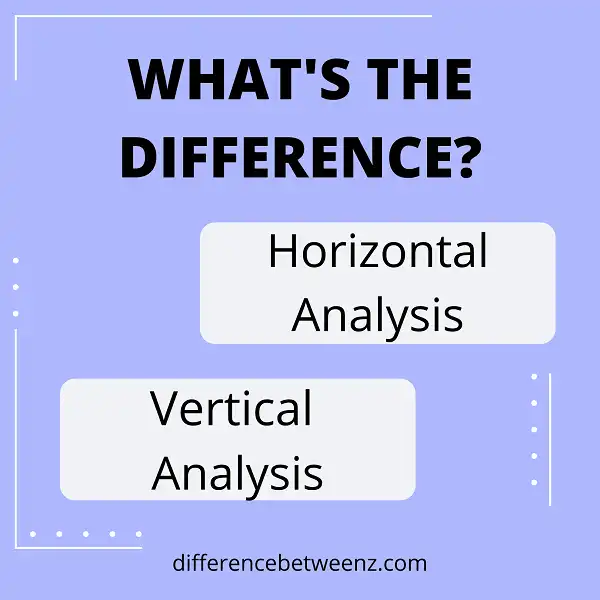When it comes to financial statement analysis, there are two main types of analysis: horizontal analysis and vertical analysis. Each type of analysis provides different information about a company’s financial performance. The horizontal analysis looks at data from past periods to spot trends, while vertical analysis compares a company’s financial performance from one period to the next.
What is Horizontal Analysis?
Horizontal analysis is a financial technique that is used to compare information over time, or between different companies. This type of analysis can be used to assess trends, calculate ratios, and generate growth rates. When conducting horizontal analysis, financial statements are often divided into line items, with each line representing a specific category of information. This can include items such as revenue, expenses, assets, and liabilities. The line items are then compared side-by-side in order to identify any changes or trends.
What is Vertical Analysis?
When performing a vertical analysis on a financial statement, each line item is listed as a percentage of a base figure. The base figure can be total assets, total liabilities, or total equity, depending on which financial statement is being analyzed. The purpose of vertical analysis is to show the relative sizes of different line items on a financial statement.
For example, if total assets are the base figure, then the percentages for each line item will show what portion of total assets each line item represents. Vertical analysis can be performed on any type of financial statement, including the balance sheet, income statement, and cash flow statement.
Difference between Horizontal Analysis and Vertical Analysis
The primary difference between horizontal analysis and vertical analysis is the way in which they present financial information. Horizontal analysis compares financial information over time, while vertical analysis compares different items within a single financial statement. However, both types of analysis can be used to identify trends and relationships that may not be immediately apparent.
- Horizontal analysis is often used to assess a company’s financial health over time. By comparing financial statements from different periods, horizontal analysis can reveal whether a company is growing, shrinking, or remaining stagnant.
- This information can be valuable for both investors and managers. For example, if horizontal analysis reveals that a company’s sales have been declining for several quarters, this may be cause for concern.
- On the other hand, if the company’s gross margin is improving, this may indicate that cost-cutting measures are having a positive effect on the bottom line.
Vertical analysis, on the other hand, focuses on individual items within a financial statement. This type of analysis can be used to identify relationships between different items on the balance sheet or income statement. For example, vertical analysis can be used to calculate a company’s debt-to-equity ratio or return on equity.
Conclusion
Horizontal analysis is a financial statement analysis technique that compares financial data between two or more periods of time. This type of analysis can be used to identify trends in revenue, expenses, and net income over time. Vertical Analysis is a financial statement analysis technique that calculates the percentage of each line item on the statement relative to the total amount reported on the statement.
This type of analysis can be used to measure changes in individual line items from one period to another. Horizontal analysis allows you to see how your company’s performance has changed over time, while vertical analysis helps you track specific aspects of your company’s performance over time.


